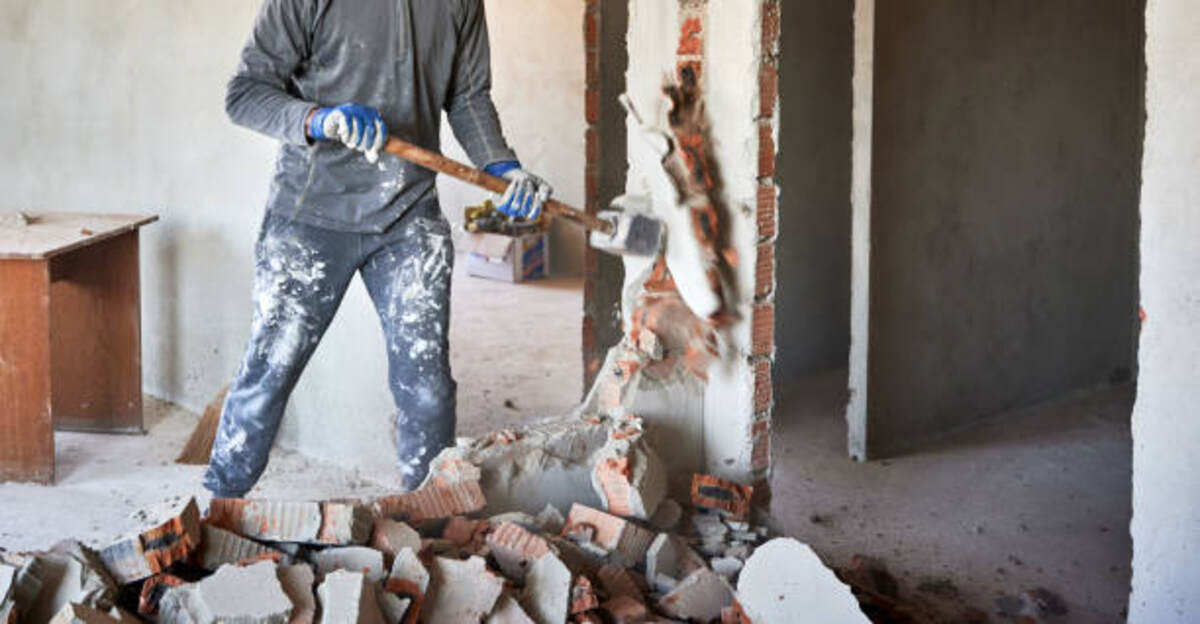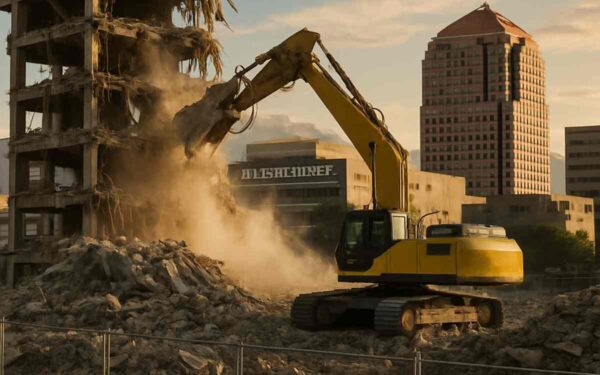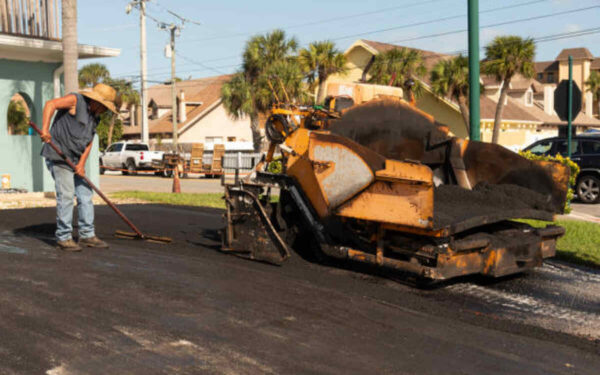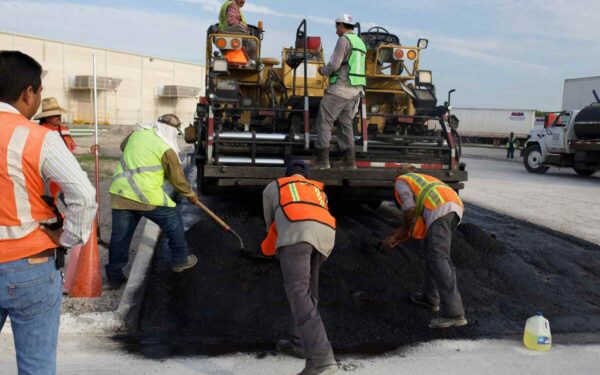Atlanta’s Historic Buildings: Demolition vs. Preservation

Hey there, fellow history buffs and architecture enthusiasts! Today, we’re diving into a hot topic that’s been buzzing around Atlanta for quite some time: the battle between demolishing and preserving the city’s historic buildings. This conversation gets to the heart of what we value more—progress or preservation. Browse the Best info about Atlanta demolition companies.
The Rich Tapestry of Atlanta’s Architecture
Atlanta is a city with a vibrant history reflected in its architecture. From the elegant antebellum homes to the post-war modernist structures, these buildings are more than just bricks and mortar; they’re stories waiting to be told. Walking through neighborhoods like Inman Park or Old Fourth Ward is like stepping back in time, giving us a glimpse into the past while still being rooted in the present.
Architectural Styles and Their Stories
The architectural styles of Atlanta are as diverse as its history. Antebellum homes, with their grand columns and sweeping porches, tell tales of a pre-Civil War South. These homes are not merely residences but are emblematic of an era that shaped the socio-economic fabric of the region. Meanwhile, the modernist structures speak to a time of innovation and optimism post-World War II, when Atlanta was rapidly evolving into a modern metropolis.
Each building style in Atlanta reveals insights into different historical periods and cultural shifts. Victorian homes, with their intricate woodwork and ornate facades, reflect the prosperity and artistic tastes of the late 19th century. Meanwhile, the sleek lines of mid-century modern buildings embody the forward-thinking spirit of the 1950s and 60s. These architectural styles collectively narrate the city’s journey through time, offering a tangible connection to the past.
Neighborhood Narratives
Neighborhoods in Atlanta are like chapters of a book, each with its unique narrative. Inman Park, for example, is a story of revival and resilience, showcasing Victorian homes that have been lovingly restored to their former glory. The neighborhood’s transformation from decay to desirability underscores the community’s commitment to preserving its architectural heritage. Similarly, the Old Fourth Ward tells a tale of rebirth, where industrial spaces have been reimagined as vibrant, mixed-use developments, blending history with modernity.
Exploring these neighborhoods offers a window into the lives of the people who built and inhabited these spaces. Each street and avenue has its own personality, shaped by historical events and cultural influences. From the Civil Rights Movement to the Atlanta Olympics, these neighborhoods have witnessed pivotal moments that have left indelible marks on their landscapes. Walking through these areas is like paging through a living history book, with each building contributing a sentence to the broader narrative.
The Role of Historic Districts
Historic districts play a crucial role in Atlanta’s preservation efforts. These areas are designated for their concentration of historically significant buildings, ensuring that their architectural integrity is maintained. By establishing such districts, the city acknowledges the cultural and historical importance of these areas, providing them with legal protections against unsympathetic alterations or demolitions.
The establishment of historic districts also fosters a sense of community pride and identity. Residents of these areas often become stewards of their neighborhood’s history, actively participating in preservation efforts and advocating for the protection of their architectural heritage. This collective commitment to preservation not only safeguards the physical structures but also strengthens the social fabric of the community, creating a shared sense of belonging and continuity.
Why Preservation Matters
Preserving these historic buildings isn’t just about nostalgia. It’s about maintaining the character and soul of Atlanta. Every structure tells a part of the city’s story, contributing to its unique identity. Preservation can also offer economic benefits through tourism and increased property values. Plus, it’s an environmentally friendly choice—saving buildings reduces the need for new materials and minimizes waste.
Cultural Identity and Community Pride
Preservation is a vital component of maintaining Atlanta’s cultural identity. Historic buildings serve as visual reminders of the city’s diverse heritage, connecting present-day residents with their predecessors. When people see these structures, they are reminded of the struggles and triumphs that shaped their community, fostering a sense of pride and belonging.
Community pride is often rooted in the preservation of local landmarks. These structures are not just relics of the past; they are integral parts of the community’s current identity. By maintaining these buildings, residents affirm the value of their shared history, creating a stronger sense of community cohesion. This pride, in turn, can inspire further preservation efforts, ensuring that future generations can also appreciate these architectural treasures.
Economic Benefits of Preservation
The economic benefits of preserving historic buildings are significant. Restored structures can boost local economies by attracting tourists interested in exploring the city’s architectural heritage. Walking tours, heritage trails, and cultural festivals centered around these buildings can generate substantial revenue for local businesses, from restaurants to retail shops.
Furthermore, preserved buildings often experience increased property values, benefiting both individual homeowners and the community at large. These structures can become highly desirable real estate, drawing in new residents and investors. This influx of interest can lead to revitalized neighborhoods, increased economic activity, and improved infrastructure, ultimately benefiting the entire city.
Environmental Sustainability
Preservation is also an environmentally sustainable choice. By saving existing structures, we reduce the need for new construction materials, which often require significant energy and resources to produce. Renovating and repurposing buildings minimizes waste and decreases the environmental impact associated with demolition and new construction.
Adaptive reuse, a key component of preservation, further enhances sustainability. By transforming old buildings for new purposes, such as converting warehouses into apartments or offices, we extend the life cycle of existing structures, reducing the demand for new resources. This approach not only conserves materials but also preserves the embodied energy already invested in these buildings, aligning with broader efforts to create more sustainable urban environments.
The Case for Demolition
Now, let’s talk about the other side of the coin—demolition. As much as we love history, we can’t ignore the fact that Atlanta is a growing city. Sometimes, old buildings are beyond repair or don’t meet modern safety standards, and the land could be better utilized for new developments that serve the city’s current needs.
Urban Growth and Development Pressures
Atlanta is experiencing rapid urban growth, and with it comes the pressure to accommodate an expanding population. This growth necessitates new housing, commercial spaces, and infrastructure to meet the needs of its residents. In some cases, demolition may be the most practical solution to create space for these developments, particularly in areas where land is scarce.
Balancing the demands of urban growth with preservation requires careful planning and consideration. City planners must weigh the benefits of new developments against the cultural and historical value of existing structures. While demolition can provide opportunities for modernization and economic development, it is essential to consider the long-term impacts on the community’s character and identity.
Safety and Structural Concerns
Safety is a paramount consideration when evaluating the feasibility of preserving historic buildings. Many older structures may not meet current building codes or safety standards, posing potential risks to occupants and the surrounding community. In such cases, demolition may be necessary to address these concerns and ensure public safety.
However, before resorting to demolition, it is important to explore alternative solutions, such as retrofitting or reinforcing the building to meet safety standards. Preservationists and engineers can work together to assess the structural integrity of historic buildings and identify feasible options for restoration. By prioritizing safety while exploring preservation possibilities, cities can strike a balance between protecting their heritage and ensuring public well-being.
Economic Considerations
Economic considerations play a significant role in the decision to demolish or preserve historic buildings. In some instances, the cost of restoring an aging structure may exceed the potential benefits, making demolition a more viable option. Additionally, new developments may offer greater economic returns, providing opportunities for job creation and increased tax revenue.
However, it is essential to consider the long-term economic impacts of demolition versus preservation. While new developments may offer immediate financial gains, preserved buildings can contribute to a community’s cultural and economic vitality over time. By conducting comprehensive cost-benefit analyses, city officials can make informed decisions that balance short-term economic considerations with long-term sustainability and cultural value.
The Role of Demolition Companies in Atlanta, GA
Demolition companies in Atlanta, GA, like Green Circle Demolition, are at the forefront of urban development. They play a critical role in clearing space for new projects, ensuring that the city can accommodate its expanding population and evolving infrastructure needs. These companies use advanced techniques to carry out demolitions safely and efficiently, often recycling materials from old buildings to minimize environmental impact.
Innovative Demolition Techniques
Demolition companies in Atlanta employ innovative techniques to ensure that their operations are as efficient and sustainable as possible. Advanced machinery and technology allow for precise demolitions, minimizing the disruption to surrounding areas and reducing the environmental impact. Techniques such as selective demolition enable companies to salvage valuable materials, such as bricks, wood, and metal, for reuse in new construction projects.
The use of environmentally friendly demolition methods reflects a growing awareness of the need to balance urban development with sustainability. By incorporating recycling and waste reduction strategies into their operations, demolition companies contribute to the city’s efforts to minimize its environmental footprint. This approach not only benefits the environment but also aligns with Atlanta’s broader sustainability goals, fostering a more responsible and forward-thinking approach to urban growth.
Collaborations with Preservationists
Demolition companies often collaborate with preservationists and city officials to identify structures that can be preserved or repurposed. This collaboration ensures that demolition is only pursued when necessary and that alternative solutions are explored whenever possible. By working together, demolition companies and preservationists can find creative ways to retain the historical value of buildings while accommodating modern development needs.
These partnerships also facilitate knowledge sharing and best practices, enabling both demolition companies and preservationists to learn from each other’s expertise. By fostering open communication and collaboration, these stakeholders can develop innovative solutions that balance the need for urban growth with the preservation of Atlanta’s architectural heritage.
Economic and Community Impacts
The work of demolition companies has significant economic and community impacts. By clearing space for new developments, these companies contribute to the city’s economic growth, creating opportunities for job creation and increased tax revenue. New developments can revitalize neighborhoods, attracting new residents and businesses and boosting local economies.
However, it is important to consider the potential social impacts of demolition on communities. The loss of historic buildings can erode a community’s cultural identity and sense of place. To mitigate these impacts, demolition companies can engage with local residents and community groups to ensure that their operations are conducted transparently and with sensitivity to the community’s needs and values. By prioritizing community engagement, demolition companies can contribute to more inclusive and sustainable urban development.
Striking a Balance
So, how do we find a middle ground between demolition and preservation? It’s all about balance and making informed decisions that consider both historical significance and practical needs.
Criteria for Preservation
Determining which buildings should be preserved involves several factors. Is the building architecturally significant? Does it have historical importance? Are there viable alternatives to demolition? By answering these questions, city planners and preservationists can make thoughtful decisions about which structures to save.
Assessing Historical and Cultural Value
Assessing the historical and cultural value of a building is a critical step in determining its preservation eligibility. Preservationists examine various factors, such as the building’s architectural style, historical significance, and association with notable events or figures. Buildings that contribute to the understanding of a community’s history or that represent a particular architectural style may be prioritized for preservation.
In addition to historical and architectural considerations, the cultural value of a building is also assessed. Structures that hold cultural or symbolic importance to a community, such as places of worship or gathering spaces, may be preserved to maintain the community’s cultural heritage. By evaluating these factors, preservationists can identify buildings that are integral to a community’s identity and advocate for their protection.
Balancing Development and Preservation Needs
Balancing development and preservation needs requires a nuanced approach that considers both short-term and long-term goals. City planners and developers must work collaboratively with preservationists to identify opportunities for integrating historic buildings into new developments. By incorporating preserved structures into modern projects, cities can create dynamic urban environments that honor their past while embracing the future.
One approach to achieving this balance is through zoning and land-use regulations that encourage adaptive reuse and mixed-use developments. By incentivizing the preservation and repurposing of historic buildings, cities can promote sustainable growth while maintaining their architectural heritage. Additionally, public-private partnerships can facilitate the funding and resources needed for preservation efforts, ensuring that historic buildings are preserved for future generations.
Challenges and Opportunities
Balancing demolition and preservation presents both challenges and opportunities for cities like Atlanta. One challenge is the need for adequate funding and resources to support preservation efforts. Historic preservation can be costly, requiring investments in restoration and maintenance. However, creative funding solutions, such as tax incentives and grants, can provide the necessary financial support for preservation projects.
On the other hand, the opportunity lies in leveraging preservation as a tool for community development and revitalization. Preserved buildings can serve as anchors for cultural and economic activities, attracting tourists, businesses, and residents. By recognizing the potential of preservation to enhance a city’s vibrancy and identity, cities can transform challenges into opportunities for growth and sustainability.
Innovative Solutions
Innovative solutions are emerging to bridge the gap between the past and the future. Adaptive reuse is one such strategy, where old buildings are repurposed for new uses. This approach retains the structure’s historical charm while making it functional for modern-day needs. Think of a vintage warehouse transformed into trendy loft apartments or a historic church turned into a vibrant community center.
Adaptive Reuse: Blending Old and New
Adaptive reuse is a powerful strategy that blends the old with the new, breathing new life into historic buildings while preserving their architectural integrity. This approach involves transforming a building’s original purpose to meet contemporary needs, such as converting industrial spaces into residential or commercial properties. By retaining the existing structure, adaptive reuse maintains the building’s historical character while introducing modern amenities and design elements.
The benefits of adaptive reuse extend beyond preservation. This approach can enhance a building’s functionality, making it more energy-efficient and accessible. By incorporating sustainable design principles, such as energy-efficient lighting and HVAC systems, adaptive reuse projects can reduce a building’s environmental impact while preserving its historical significance. This harmonious blend of old and new creates dynamic spaces that honor the past while serving present and future generations.
Creative Repurposing of Historic Spaces
Creative repurposing of historic spaces offers opportunities for innovation and community engagement. By transforming historic buildings into vibrant community centers, cultural venues, or co-working spaces, cities can create inclusive environments that foster social interaction and cultural exchange. These repurposed spaces can become hubs of creativity and collaboration, attracting diverse groups of people and supporting local arts and culture.
Repurposing historic spaces also allows cities to address contemporary challenges, such as affordable housing or urban density. By converting underutilized historic buildings into affordable housing units or mixed-use developments, cities can provide much-needed housing options while preserving their architectural heritage. This approach aligns with broader efforts to create sustainable and inclusive urban environments, demonstrating the potential of historic preservation to drive positive social change.
Technological Innovations in Preservation
Technological innovations are playing a transformative role in historic preservation, enabling more efficient and effective restoration processes. Advanced technologies, such as 3D scanning and modeling, allow preservationists to create detailed digital replicas of historic buildings, facilitating precise restoration and documentation. These digital tools can enhance the accuracy and efficiency of preservation efforts, ensuring that historical details are meticulously preserved.
Furthermore, technology can improve the accessibility and engagement of historic sites. Virtual reality (VR) and augmented reality (AR) applications can provide immersive experiences that transport visitors back in time, allowing them to explore historic buildings and neighborhoods in new ways. By leveraging technology, cities can enhance the educational and cultural value of their historic sites, attracting a wider audience and fostering a deeper appreciation for their architectural heritage.
Community Involvement and Advocacy
It’s not just up to city officials and developers to decide the fate of historic buildings. Community involvement is crucial. Local residents, advocacy groups, and historians all have a stake in the conversation. Public forums, petitions, and social media campaigns can be powerful tools for expressing collective sentiment and influencing decisions.
Grassroots Advocacy and Public Engagement
Grassroots advocacy plays a vital role in historic preservation efforts, empowering communities to take an active role in shaping the future of their neighborhoods. Local residents and community organizations can mobilize to advocate for the preservation of historic buildings, using tools such as petitions, public meetings, and awareness campaigns to influence decision-makers. These grassroots efforts can galvanize public support and raise awareness of the cultural and historical value of threatened structures.
Public engagement is essential for fostering a sense of ownership and responsibility among community members. By involving the public in the decision-making process, cities can ensure that preservation efforts reflect the values and priorities of the community. Open dialogue and collaboration between residents, preservationists, and city officials can lead to more informed and inclusive preservation strategies, creating a shared vision for the community’s future.
The Role of Preservation Advocacy Groups
Preservation advocacy groups play a crucial role in championing the cause of historic preservation. These organizations work to protect and promote historic buildings by conducting research, raising awareness, and advocating for policy changes. They serve as valuable resources for community members, providing expertise and support for preservation initiatives.
Advocacy groups also collaborate with government agencies, developers, and other stakeholders to develop strategies for preserving historic sites. By building partnerships and coalitions, these groups can amplify their impact and influence policy decisions. Their efforts can lead to the establishment of historic districts, the implementation of preservation-friendly zoning regulations, and the securing of funding for restoration projects. Through their advocacy, preservation groups help ensure that the voices of the community are heard and that historic buildings are preserved for future generations.
Education and Awareness
Education and awareness are key components of successful preservation efforts. By educating the public about the historical and cultural significance of historic buildings, preservationists can foster a deeper appreciation for the city’s architectural heritage. Educational programs, workshops, and tours can provide valuable insights into the history and architecture of preserved structures, helping to cultivate a sense of pride and stewardship among community members.
Awareness campaigns can also highlight the economic and environmental benefits of preservation, demonstrating its value to the broader community. By showcasing successful preservation projects and their positive impacts, cities can inspire others to support preservation efforts and become advocates for their architectural heritage. Through education and awareness, preservationists can build a strong foundation of public support for the protection and celebration of historic buildings.
Success Stories
Atlanta has several success stories where community advocacy led to the preservation of historic sites. The Fox Theatre, once slated for demolition, was saved by a passionate group of Atlantans who recognized its cultural significance. Today, it stands as a cherished landmark and a testament to what community action can achieve.
The Fox Theatre: A Triumph of Community Action
The Fox Theatre is a shining example of how community action can save a beloved historic site from demolition. In the 1970s, the theatre faced the threat of demolition to make way for a new office building. However, a passionate group of Atlantans, recognizing the theatre’s cultural and historical significance, rallied to save it. Through fundraising efforts, public advocacy, and widespread community support, the “Save the Fox” campaign succeeded in preserving this iconic landmark.
Today, the Fox Theatre stands as a cherished cultural institution, hosting a wide range of performances and events. Its preservation not only saved a piece of Atlanta’s architectural heritage but also revitalized the surrounding area, contributing to the city’s cultural and economic vitality. The success of the Fox Theatre preservation effort demonstrates the power of community action and serves as an inspiration for future preservation initiatives.
The Atlanta BeltLine: Transforming Industrial Spaces
The Atlanta BeltLine project is a transformative example of adaptive reuse and preservation. Once an underutilized railway corridor, the BeltLine has been reimagined as a vibrant network of parks, trails, and transit that connects neighborhoods across the city. This innovative project repurposes historic industrial spaces, preserving their historical significance while creating new recreational and cultural opportunities for residents and visitors.
The BeltLine has become a catalyst for urban revitalization, attracting new development and investment to the surrounding areas. Its success has inspired similar projects in other cities, showcasing the potential of adaptive reuse to create sustainable and inclusive urban environments. By preserving and repurposing historic spaces, the BeltLine project demonstrates the positive impact of preservation on community development and quality of life.
The Sweet Auburn Historic District: A Legacy of Preservation
The Sweet Auburn Historic District is a testament to the power of preservation in celebrating and honoring the cultural and historical contributions of African Americans in Atlanta. This district, once a thriving center of African American business and culture, faced decline and neglect in the mid-20th century. However, through concerted preservation efforts, the district has been revitalized, preserving its rich history and cultural heritage.
The preservation of Sweet Auburn has involved restoring historic buildings, promoting cultural tourism, and supporting local businesses. These efforts have reinvigorated the district, attracting visitors and residents who are drawn to its unique cultural and historical significance. The success of the Sweet Auburn preservation efforts highlights the importance of preserving diverse cultural narratives and ensuring that all communities have a voice in shaping their heritage.
Conclusion: Looking to the Future
As Atlanta continues to grow and evolve, the debate between demolition and preservation will persist. It’s a complex issue with no one-size-fits-all solution. However, by valuing both our heritage and our future, we can make decisions that honor the past while embracing progress.
Embracing a Holistic Approach to Urban Development
Looking to the future, cities like Atlanta must embrace a holistic approach to urban development that considers the interconnectedness of preservation, progress, and community well-being. By integrating preservation into broader urban planning and development strategies, cities can create dynamic environments that celebrate their history while accommodating future growth.
This approach requires collaboration among diverse stakeholders, including city officials, developers, preservationists, and community members. By working together, these groups can identify opportunities for integrating historic buildings into new developments, promoting sustainable growth, and enhancing the quality of life for residents. Through collaborative and forward-thinking strategies, cities can navigate the complexities of urban development and preservation, ensuring that their architectural heritage is preserved for future generations.
Fostering Innovation and Creativity
Innovation and creativity will play a crucial role in shaping the future of preservation and urban development. By exploring new technologies, design approaches, and funding mechanisms, cities can develop innovative solutions that balance the need for progress with the desire to preserve their architectural heritage. This creativity can lead to the development of unique and inspiring urban spaces that reflect the city’s identity and values.
Cities can also foster innovation by supporting creative industries and cultural initiatives that celebrate their architectural heritage. By investing in arts and culture, cities can create vibrant and inclusive communities that attract residents, visitors, and businesses. This cultural vitality can contribute to economic growth and social cohesion, reinforcing the importance of preservation as a driver of community development and identity.
Inspiring Future Generations
Preservation is not just about protecting buildings; it’s about inspiring future generations to appreciate and value their heritage. By engaging young people in preservation efforts, cities can cultivate a new generation of advocates who are passionate about their architectural history and committed to preserving it for the future.
Educational programs, workshops, and community initiatives can provide opportunities for young people to learn about the importance of preservation and develop the skills needed to contribute to these efforts. By fostering a sense of stewardship and responsibility, cities can ensure that their architectural heritage is preserved and celebrated for years to come, creating a lasting legacy for future generations.
For all you aspiring novelists, content marketers, and graduate students out there, think of this issue as a story waiting to be told. It’s a narrative rich with conflict, characters, and a setting that’s as dynamic as it is historic. Use this topic to fuel your creative projects, whether you’re crafting a novel, writing an engaging article, or penning an academic paper. Remember, every building has a story—go out and tell it!
Thanks for joining me on this exploration of Atlanta’s architectural landscape. Until next time, keep writing, keep advocating, and keep preserving the stories that matter.






